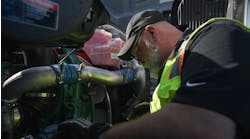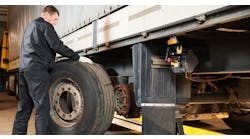There is no greater challenge to a modern maintenance department then to produce high quality work on an ongoing basis. In this case, we are referring specifically to the repair itself.
Quality problems, whatever their source, create a vicious cycle of no satisfaction, low morale, low quality, no satisfaction and so on.
According to the quality guru W.E. Deming, pride in a job well done is the greatest motivator for our workers.
It would be easier if all issues with quality could be attributed to the worker. All too often, we hear complaints that workers are just not as good as they were at some time in the idealized past.
This, like any approach is based on a faulty premise, is doomed.
In a recent class that I held for Barrick Gold Corporation, the gold industry leader in production, reserves and market capitalization, we discussed the challenge of being sure a company is producing quality maintenance work. In mining, a quality defect could rapidly deteriorate into a safety incident or in major downtime, so the stakes are high.
Beyond the usual quality control, hold points and functional testing, we were trying to ferret out the causes of quality problems.
Find the Weak Points
We opened up the discussion on quality maintenance issues by studying the causes of bad quality. I took the approach that a security expert would take when looking for ways into a building. A security professional would study and become intimate with the likely weak points of the building.
Weak points are common and well understood in the security field. Before even visiting the building, a security expert would make up a list of typical problem areas. However, the expert would have to physically visit the building and review architectural drawings to appreciate the unique flaws of the particular building.
In the same way, the causes of bad quality maintenance work for a specific job are unique. The overall checklist of potential causes is pretty easy to assemble. Here are some possible causes. This checklist is by no means complete.
Workers:
- Poor materials and parts.
- No material or lack of enough material.
- Wrong material with the right part numbers.
- Wrong material with the wrong part numbers.
- Slightly wrong material which was made to fit or adapted to the work.
- Cheap materials.
- Untrained workers.
- Errors by workers.
- Trained workers without work experience or without confidence.
- Low morale of workers. (i.e. don't want to do the work and/or have a bad work attitude.)
- Workers who don't have the capability. (i.e. the intelligence, strength, flexibility, endurance, visual and auditory acuity.)
- Workers feeling frustrated and making mistakes.
- Workers that are abusing substances (legally and illegally), or are drunk or hung over.
- Workers preoccupied by things outside work and or things at work. (i.e. personal conflict, layoff, merger, etc.)
- Workers who are tired from working long hours or moonlighting.
- Workers who are sick.
Supervision:
- Lack of, poor or incorrect instruction.
- Lack of or bad supervision.
- Lack of, improper or wrong scope.
- Bad communication between trades or shifts.
Management:
- Unrealistic expectations.
- Pushing workers too hard.
- Not enough money for the work.
- Poor planning.
Tools:
- Wrong, broken or cheap tools.
- Inadequate capacity of tools.
- Improvised tools.
- Workers who don't know how to use the available tools.
- Lack of personal protective equipment.
Working conditions:
- Bad lighting.
- Need for magnification.
- Bad or inadequate work platforms.
- Too hot or too cold.
- Rain, lightning, storms, etc.
- Graveyard shift.
Engineering:
- Lack of or wrong drawings.
- Lack of operation and maintenance manual.
- Equipment stressed beyond design capacity.
- Badly designed equipment or piping, wiring, etc.
- Lack of testing.
- Old equipment at the end of its life cycle with multiple unfolding failure modes.
Workers Aren't Always to Blame
Look over the checklist and ask yourself how many of the items are not personal issues but rather are strikes against quality that your organization is guilty of?
It is extremely easy to blame the last link in the chain - the worker. But how many other causes or potential causes might there be that any worker might fall prey to?
Of course, the worker is the last link and, therefore, is not off the hook. But the issue is bigger and more complicated than just a worker's ignorance, inattention or bad attitude.
If you are serious about improving maintenance quality, I would recommend getting a group of workers together. Include both experienced and new workers. Ask them to work together and come up with the 10 top causes of bad quality maintenance work in your organization.
Once you have the list, develop a program to mitigate or eliminate as many of the top 10 causes as you can.




